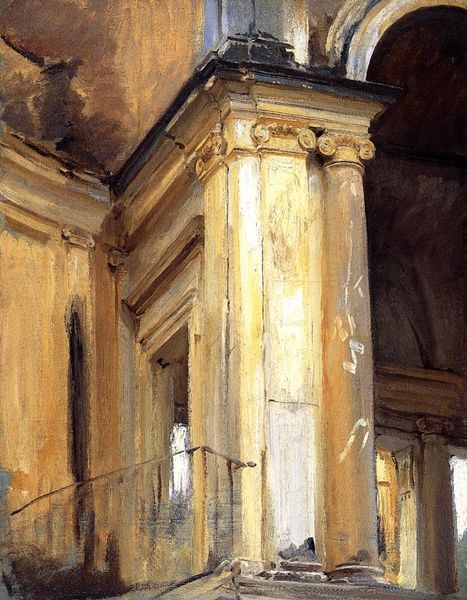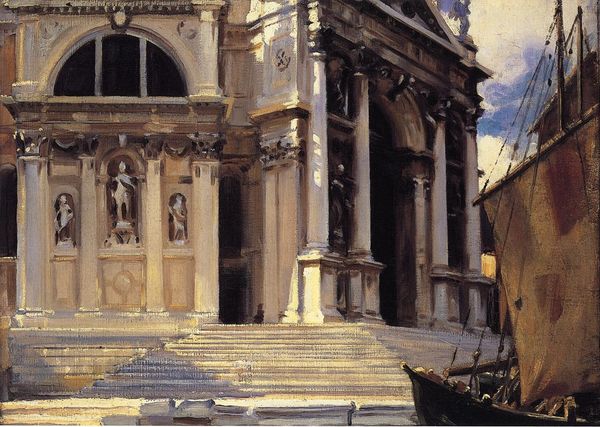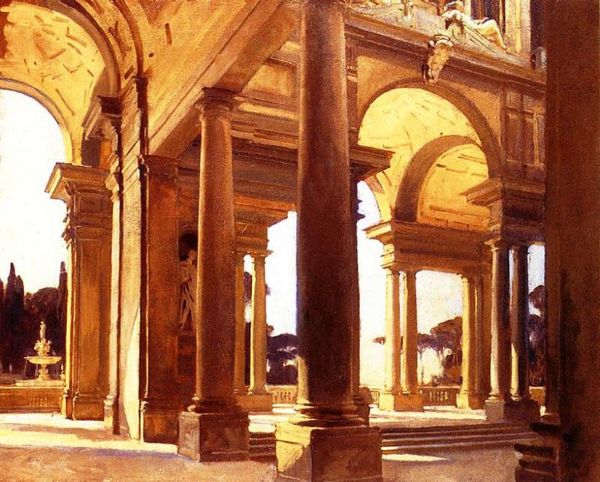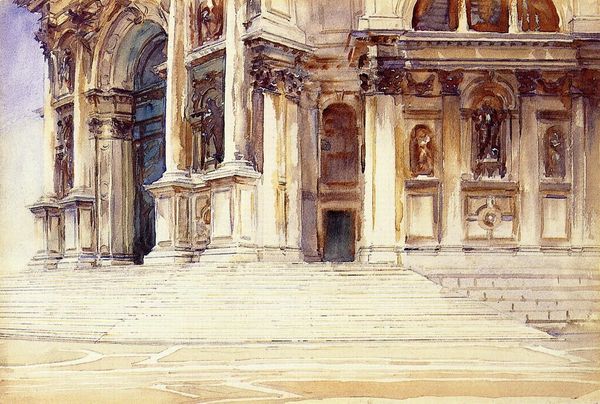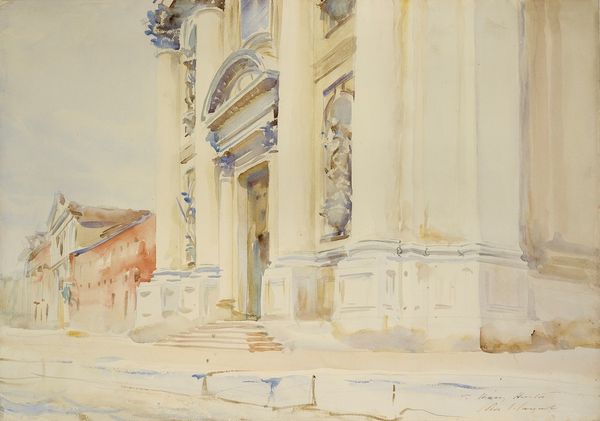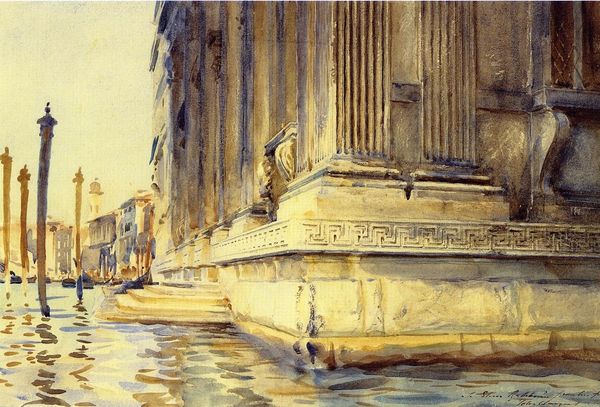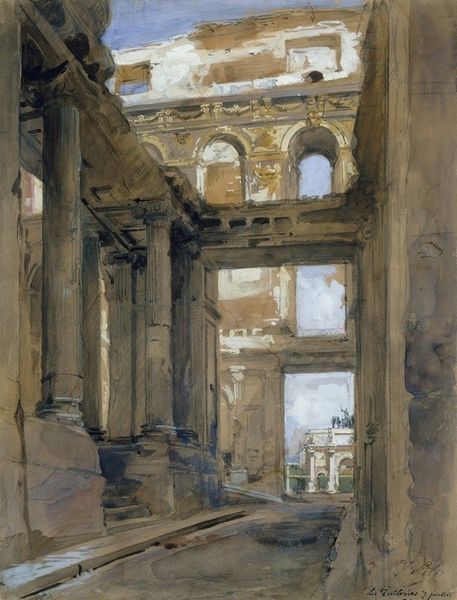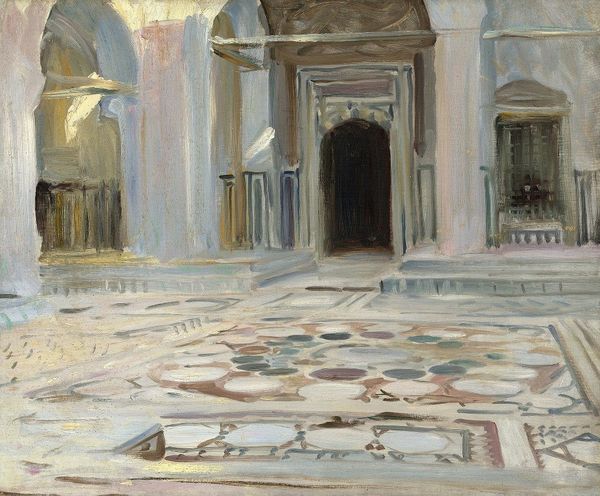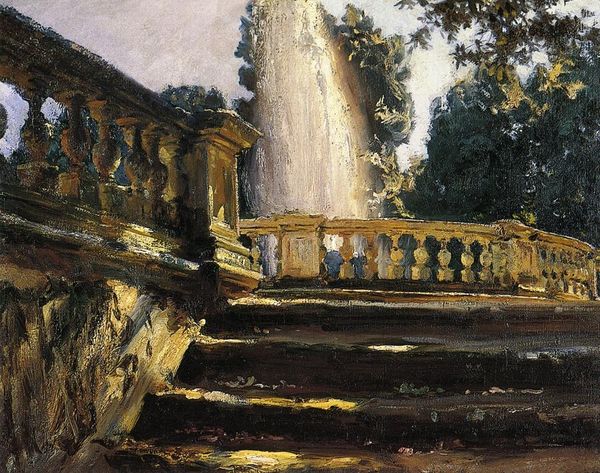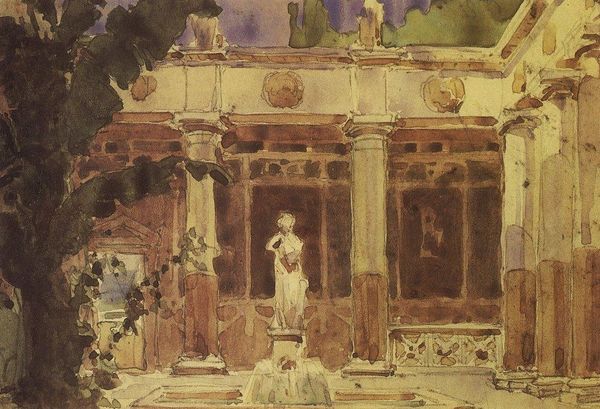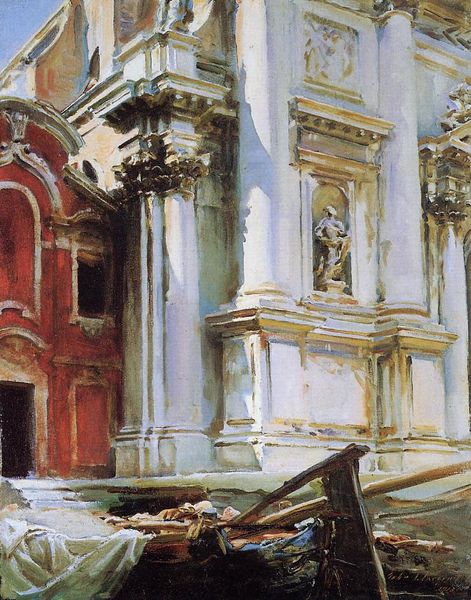
Dimensions: 53.34 x 67.94 cm
Copyright: Public domain
Editor: We’re looking at John Singer Sargent's "Villa Papa Giulia," painted in 1902 using oil paint. It depicts an Italian building bathed in sunlight. I’m struck by how the columns and arches create a sense of depth and enclosure. What formal qualities stand out to you? Curator: The composition relies on a rhythmic arrangement of vertical columns counterpointed by the horizontal lines of the steps and entablature. Notice how the light, the principal formal device, models the forms, creating both volume and shadow. Are you drawn to a specific area of this architecture? Editor: I keep returning to the repetition of forms – the arches echoing each other, receding into the distance. It feels like there’s a strong underlying geometric structure. Curator: Precisely. The architectural subject allows Sargent to explore pure form: cylinders, rectangles, and the semi-circle of the arches. Consider how the brushstrokes themselves contribute; thick impasto defines areas of direct light, while thinner washes articulate shadow and spatial recession. It's a play between surface and depth. Do you see how the texture influences our perception? Editor: Definitely! The visible brushstrokes almost dematerialize the architecture. The formal aspects work together to undermine a realistic representation. Curator: Yes. By prioritizing light, shadow, and compositional arrangement, Sargent elevates the visual experience over mere representational accuracy. We witness how light transforms substance into shimmering planes. Editor: I never thought about how the brushstrokes add another dimension to the architecture itself! The rhythmic structure now appears very consciously chosen, as opposed to an incidental capture. Curator: Considering the painting this way really allows us to appreciate the structure created in the work through these techniques.
Comments
No comments
Be the first to comment and join the conversation on the ultimate creative platform.
